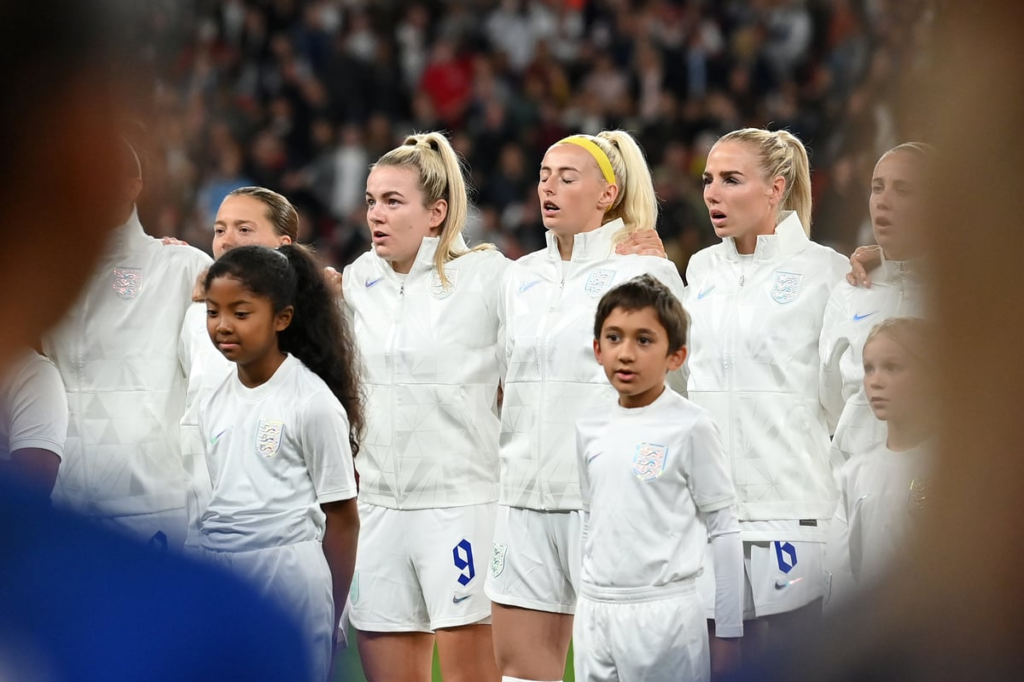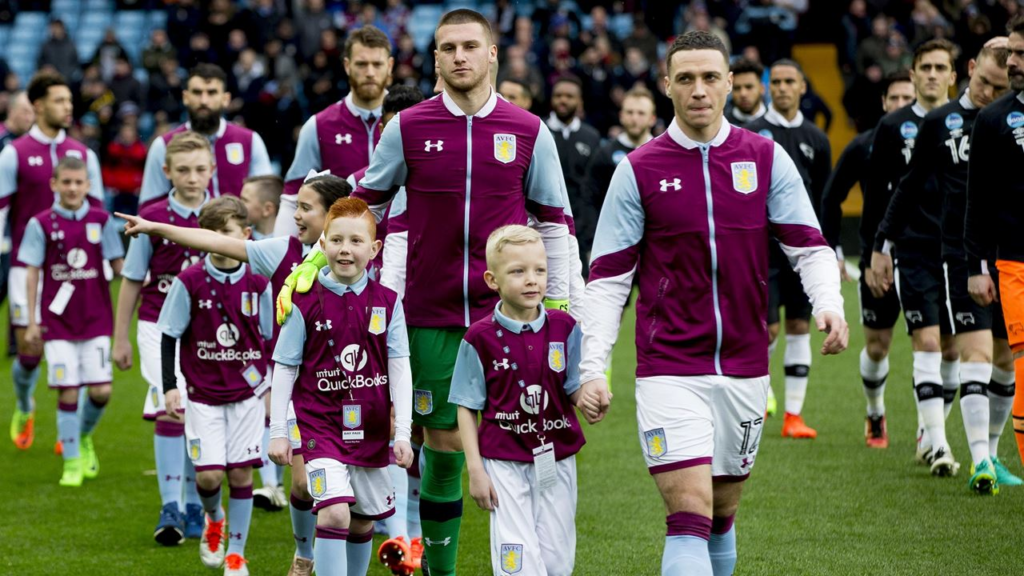Soccer has many traditions that are as much a part of the sport itself as what transpires on the pitch. Such norms include the wearing of club uniforms and regalia by players and fans respectively, the singing of national and club anthems and songs as a sign of patriotism and to boost morale, the ceremonial coin toss to decide which of the two teams gets initial possession of the ball at the start of the match and the match commentary to engage audiences at home. One such celebrated norm occurs when players walk out of the tunnel and onto the pitch with a child.
Why do soccer players always walk out with a child? Soccer players always walk out with a child for various reasons. The most common ones are to remind themselves of the great responsibility they bear as mentors who the children look up to, to support noble causes and campaigns about children, to demonstrate the innocence that the game should aspire to have, and to fulfill the wishes or dreams of the children.

A Brief Background
Unlike other soccer traditions, the practice of players walking out with a child is fairly young having begun sometime in the 1990s. The actual date that the first instance was recorded is however unknown.
Some soccer historians have argued that one of the main reasons that the practice quickly became popular is because it showed that the sport transcended all generations and reminds its custodians (the players) of the great responsibility they have towards them.
Other historians argue that the practice’s adoption must have been unintentional since teams started actively including children, who came to be known as match escorts, child mascots, or player escorts in their match programs.
Teams mostly either had one child for every player or one child for each team who acted as a mascot hence the names player escort and child/match escort respectively. The former alternative of having a child escort every player nevertheless became the preferred option since a good number of professional soccer clubs, especially those in Europe already had official club mascots.
A few good examples are Manchester United’s Fred the Red, Arsenal’s Gunnersaurus Rex, Newcastle United’s Monty the Magpie, Bayern Munich’s Berni, AC Milan’s Milanello, and FC Barcelona’s L’avi del Barça (formerly Clam).
Becoming the Norm
Two soccer tournaments are credited with having popularized the act of players walking out with a child to the point that it became almost an unwritten rule – the 2000 UEFA European Football Championship (EURO 2000) and the 2002 World Cup.

Prior to the Euro 2000, it was more common for players to walk onto the pitch with their arms interlocked as a sign of camaraderie. The action often carried through to the singing of a team’s national anthem, which normally preceded a match’s kickoff.
The 2002 World Cup further elevated the practice into the norm that it is today since the competition enjoyed a significantly larger audience than the Euro 2000. There were also renewed efforts to advocate for children’s rights by many organizations at the time including one of the competition’s partners, UNICEF (the United Nations Children’s Fund).
How Do Kids Get Picked to Walk Out with Soccer Players?
Most parents and children often wonder what it takes to be selected as a player escort or match/child mascot. A number of criteria are usually applied with the minimum being that the child should typically be between 5 and 17 years old.
The logic for this minimum requirement is simple – children who are younger than five may find the experience of walking out of a tunnel into a stadium full of thousands of spectators to be overwhelming whereas those over 17 can no longer be considered to be children.
Other ways the children are selected as player escorts or child mascots include:
- Rewarding Loyalty
Most professional soccer clubs often have fan databases made up of registered supporters who are key contributors to their team economy. These clubs often have internal loyalty schemes aimed at rewarding those fans who are consistently committed.
Fans may be identified for a number of reasons including but not limited to holding season tickets or having attended a certain number of matches without absence. As a way of extending the same courtesy to the fan’s family, a club may offer their child that sought-after opportunity.
Following suit, the EPL recently launched the #MyPLWish competition that seeks to reward fans from the United States of America, Puerto Rico, Guam, the US Virgin Islands, and American Samoa with an undisclosed prize.
- Fulfilling a Wish
Soccer clubs are also known to identify and support young fans who are battling life-threatening or terminal diseases by offering them the opportunity to be player escorts or club mascots. A good example is former EPL side Sunderland who had the late Bradley Lowery – a child who unfortunately lost his battle to neuroblastoma in 2017 – as their mascot.
A number of other non-profit organizations like the Make A Wish foundation also work to make the wishes of critically ill children a reality, including those who wish to have an experience with their favorite soccer team.
Most arrangements of this nature usually go beyond escorting players onto the pitch before games and may include other related activities within the club provided the child, the child’s parents, and the child’s doctor(s) and caregiver(s) sign off on it.
- Youth Systems
Most top soccer clubs, especially those in Europe, have youth systems that endeavor to raise their next generation of players. A few good examples of such academies are Barcelona’s La Masia Academy, Chelsea’s Development Squad and Academy, Arsenal’s Football Club Academy, and Manchester United’s Football Club Reserves and Academy.
Such youth systems often look to motivate or reward up-and-coming talents by allowing them to mingle with their role models from the club’s senior squad in order to give them opportunities to seek advice and learn the intangibles that can only be drawn from experiencing a real-life top-flight match.
- By Paying
Some soccer clubs are known to offer parents the opportunity to have their children escort their favorite players onto the pitch for a fee. Though it doesn’t appear noble on its surface as compared to the other avenue in this list, this approach has been known to be an effective way to raise funds for clubs and the causes they support.
A number of EPL clubs are believed to charge parents a standard/fixed fee to have their children considered as escorts/mascots. The fee in question is rumored to be anywhere from £86 to upwards of £1200 depending on the club’s popularity and stature.
Such opportunities are normally offered on a first come first served basis and with a guarantee to parents that their child would be offered the opportunity during some time within a given season.
